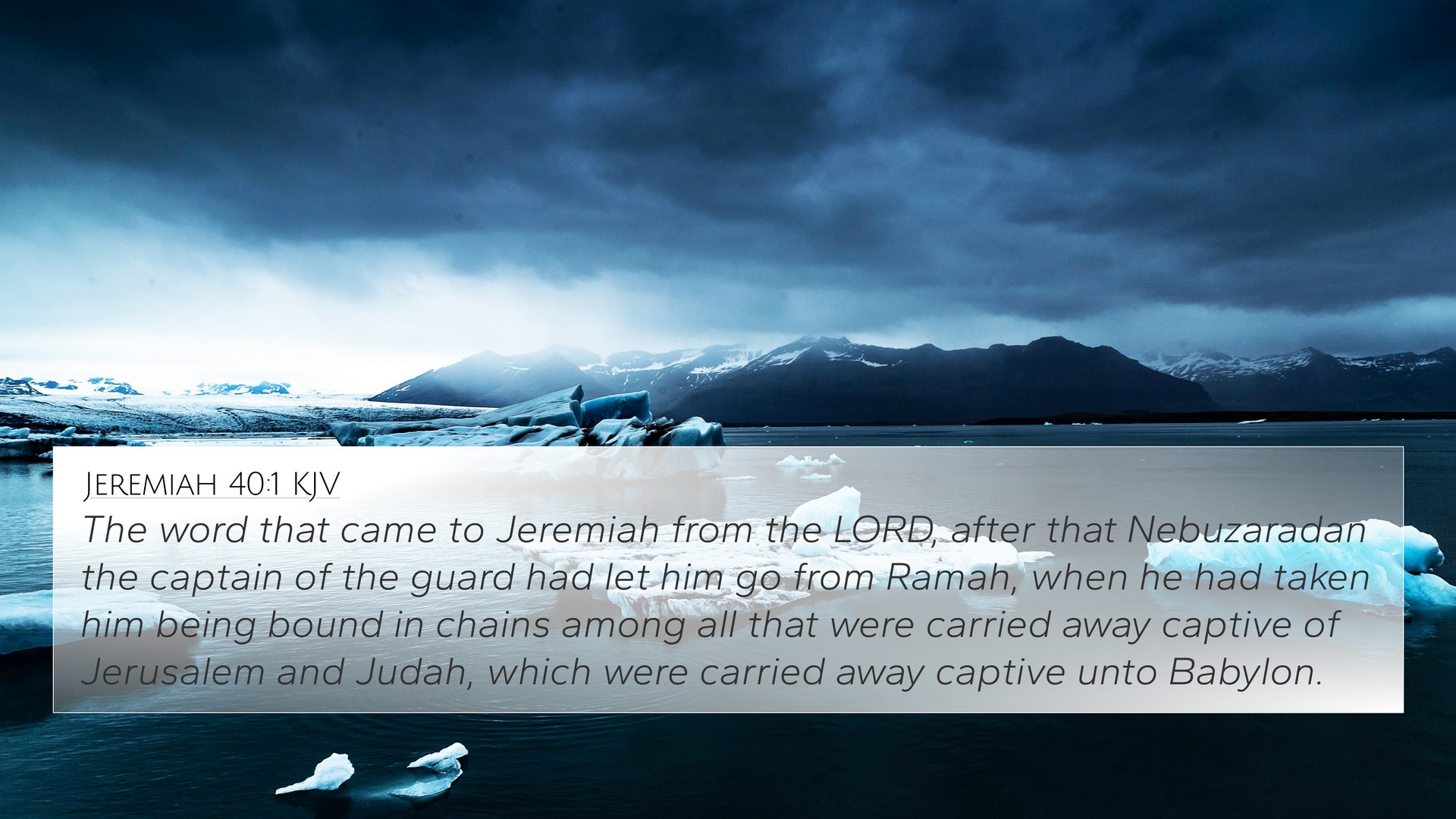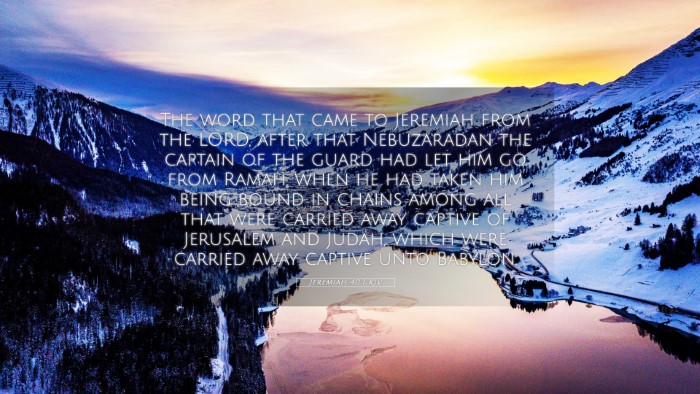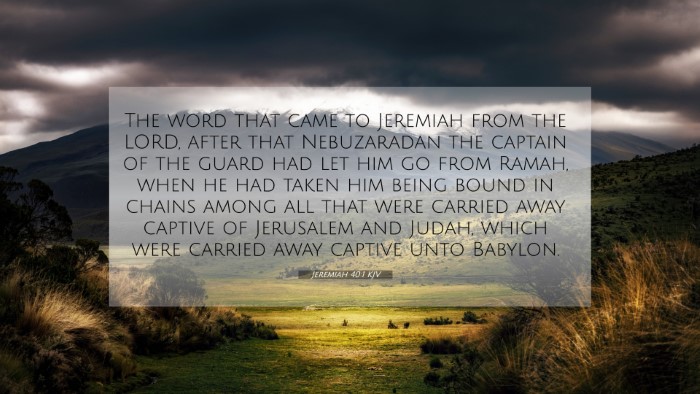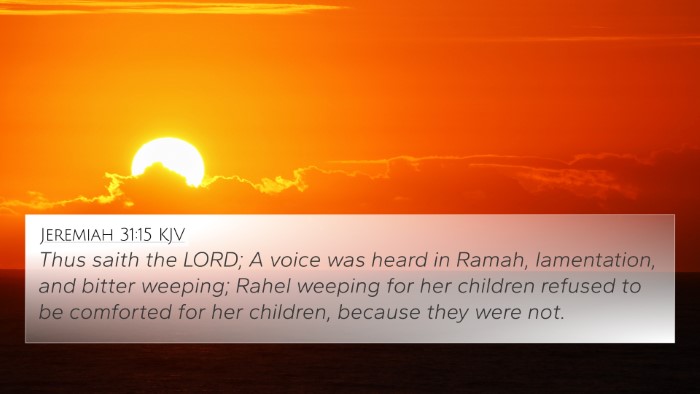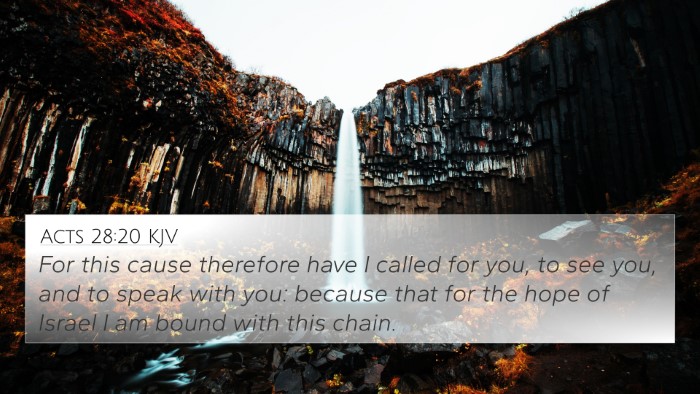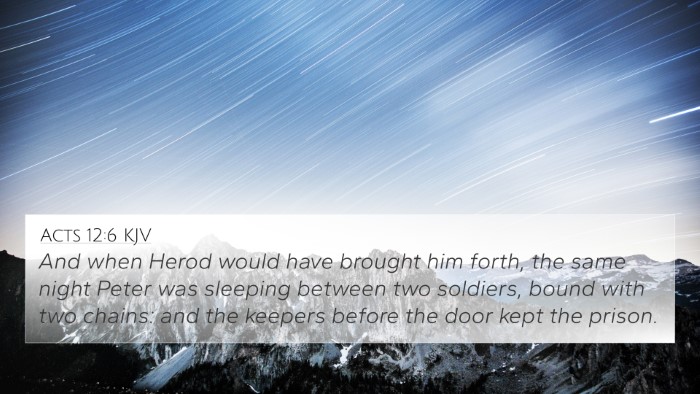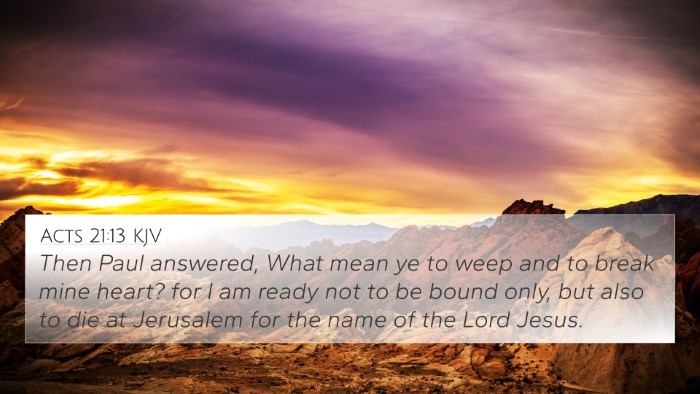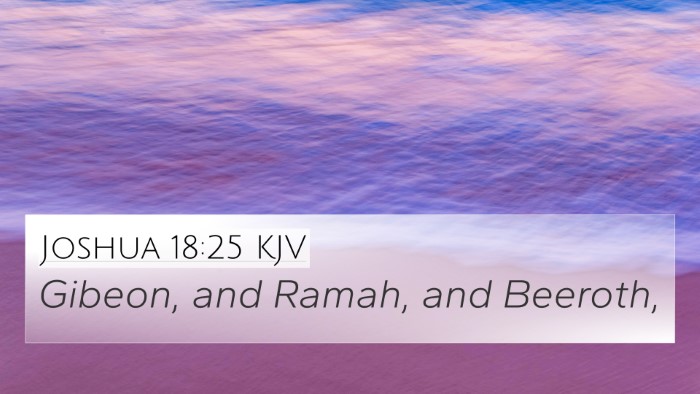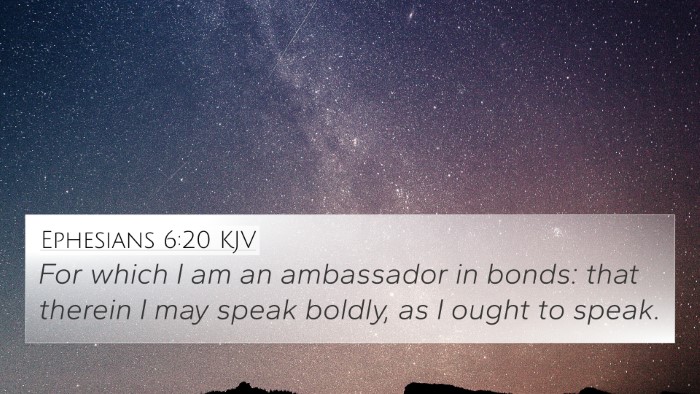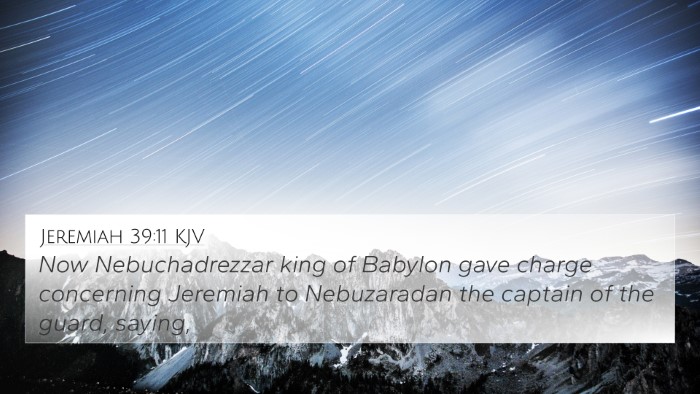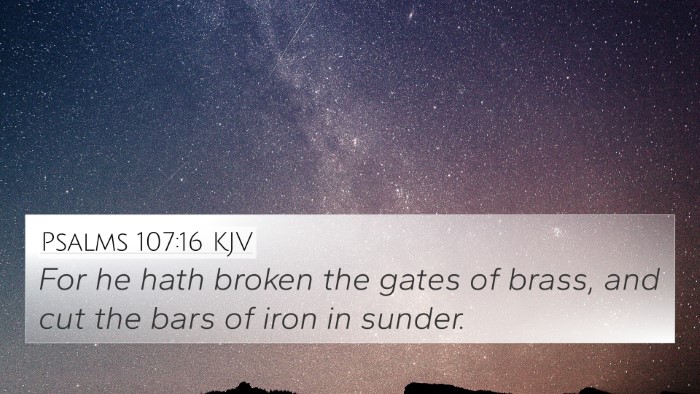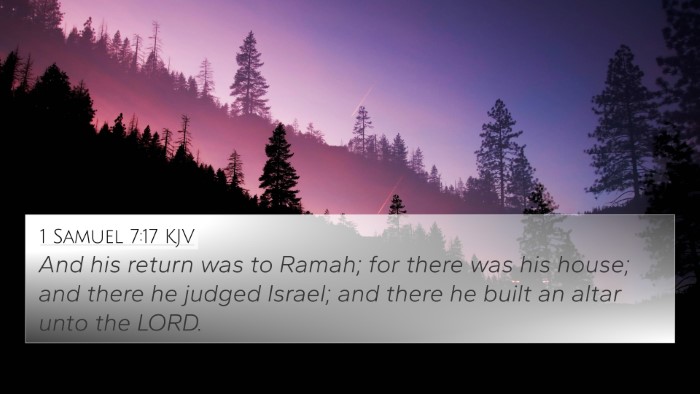Understanding Jeremiah 40:1
Jeremiah 40:1 states, "The word that came to Jeremiah from the LORD after Nebuzaradan the captain of the guard had let him go from Ramah, when he had taken him being bound in chains among all that were carried away to Jerusalem and Judah, which were carried away captive."
Contextual Overview
This verse occurs in the historical context of the Babylonian exile, specifically detailing the aftermath of Jerusalem's fall. Jeremiah, the prophet, is released from captivity and given the opportunity to continue his ministry in the land. This pivotal moment reflects God's covenant faithfulness even amid judgment.
Insights from Commentaries
-
Matthew Henry:
Matthew Henry emphasizes the mercy of God in allowing Jeremiah to be freed from captivity. He underlines that despite the destruction and judgment upon the nation, the voice of God's prophet remains vital for guiding the remnant and nurturing hope amidst despair.
-
Albert Barnes:
Albert Barnes provides a further understanding of the situation, noting that Jeremiah's release signifies a new beginning and a chance to rebuild. He also points to the symbolism of chains, representing sin and judgment, but the release implies God's ongoing plan and redemption for His people.
-
Adam Clarke:
Adam Clarke points out Jeremiah's unique status before God and emphasizes his role as a guide for any who would remain in the land. Clarke highlights the grace that God extends, allowing Jeremiah to engage with those who survived the siege, reinforcing the importance of divine guidance in tumultuous times.
Biblical Themes and Connections
The theme of divine mercy amidst judgment resonates throughout Scripture. Jeremiah 40:1 illustrates God’s continual communication with His people through chosen messengers. Below are critical cross-references that support this theme and highlight the interconnectedness of the Scripture:
- Jeremiah 29:11 - God's plans for His people are plans of hope, showing His care and future purpose even in exile.
- Isaiah 61:1 - The proclamation of freedom parallels Jeremiah's release, symbolizing political and spiritual liberation.
- Luke 4:18 - Jesus quotes Isaiah, revealing His mission in the context of setting captives free and aligns with the prophetic hope Jeremiah conveyed.
- 2 Corinthians 1:20 - The assurance that all of God’s promises are fulfilled in Christ ties in with the hope that Jeremiah’s ministry offers to the exiles.
- Romans 8:28 - This verse reassures that God works all things together for good, reflecting God's overarching plans even in adverse circumstances.
- Revelation 21:4 - The future promise of God wiping away every tear relates to the hope that Jeremiah represents for the captives.
- Deuteronomy 30:3 - The promise of restoration after disobedience serves as a direct parallel to God’s repeated invitations to repent and return.
- Matthew 11:28 - Jesus’ invitation to the weary connects with the theme of divine relief from burdens akin to Jeremiah's message during captivity.
- Philippians 1:6 - Assurance that God continues the work begun in believers ties into His ongoing relation with His prophets and people.
- James 1:12 - The promise of the crown of life for those who persevere connects to the enduring hope even in bondage, as shared through Jeremiah.
Connections Between Biblical Texts
The inter-Biblical dialogue between the Old Testament narratives and New Testament fulfillments emphasizes that themes of judgment, mercy, and redemption run throughout Scripture. Understanding these connections allows believers to see the narrative arc of God's faithfulness. Here are some methods to explore those connections:
-
Cross-referencing Biblical texts: Utilizing resources such as a Bible concordance or a cross-reference Bible study guide can deepen your understanding of Biblical themes and narratives.
-
Thematic Bible verse connections: Identifying common themes across scripture enhances the context of individual verses, providing a richer understanding of God's will through His prophets and teachings.
-
Comparative Bible verse analysis: Comparing verses within their historical context and literary structure reveals insights about God’s character and covenant relationship with humanity.
-
Tools for Bible cross-referencing: Many tools exist for effective cross-referencing, from digital platforms to comprehensive thematic charts, aiding study and sermon preparation.
Conclusion
Jeremiah 40:1 serves as an essential reminder of God's unwavering commitment to His people, manifesting through prophetic voices in times of trial. Engaging with Scripture through cross-referencing can reveal deep connections and provide a broader understanding of God's work in history. Believers are encouraged to explore these connections actively to enrich their faith and knowledge.
